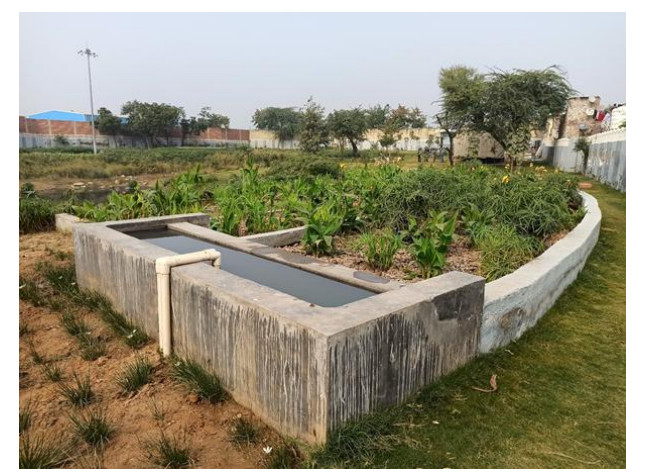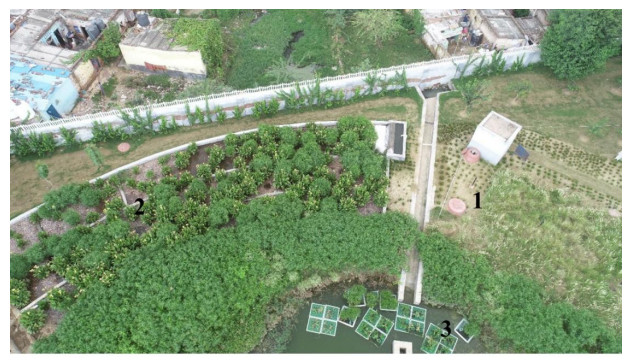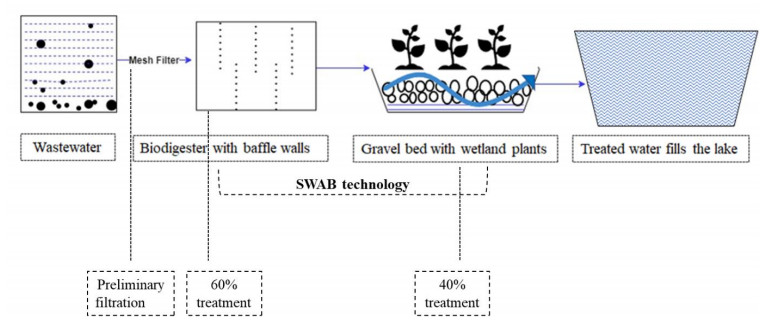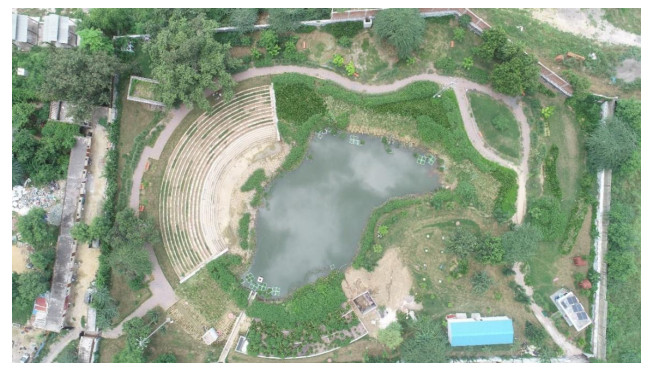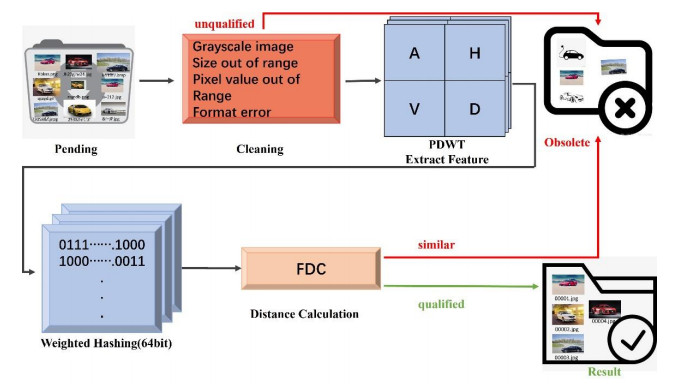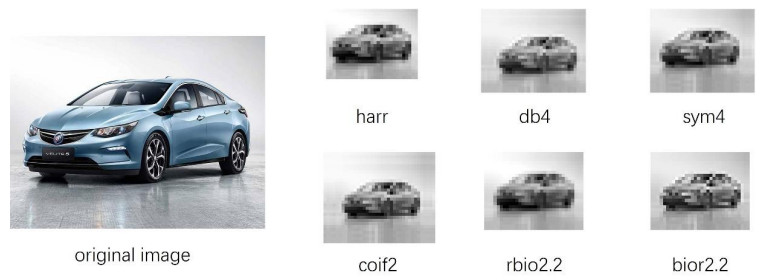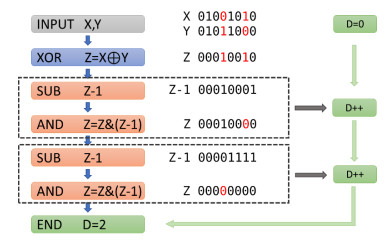To address the issue of the lack of specialized data filtering algorithms for dataset production, we proposed an image filtering algorithm. Using feature fusion methods to improve discrete wavelet transform algorithm (DWT) and enhance the robustness of image feature extraction, a weighted hash algorithm was proposed to hash features to reduce the complexity and computational cost of feature comparison. To minimize the time cost of image filtering as much as possible, a fast distance calculation method was also proposed to calculate the similarity of images. The experimental results showed that compared with other advanced methods, the algorithm proposed in this paper had an average accuracy improvement of 3% and a speed improvement of at least 30%. Compared with traditional manual filtering methods, while ensuring accuracy, the filtering speed of a single image is increased from 9.9s to 0.01s, which has important application value for dataset production.
Abbreviations: SWAB: Scientific Wetland with Active Biodigester; WWTP: Wastewater treatment plant; MLD: Million litres per day; BOD: Biological oxygen demand; HRT: Hydraulic retention time; COD: Chemical oxygen demand; TSS: Total suspended solids; TDS: Total dissolved solids; MSW: Municipal solid waste; C & D: Construction and demolition
1.
Introduction
Freshwater bodies such as ponds, lakes and reservoirs have always dotted the landscape of India and, historically, met the population's water supply demands. However, factors like rapid urbanization, population explosion and improper water resource management have caused water bodies to dry up, leading to water crises in many major cities [1]. Urbanization affects the hydrologic cycle by causing (ⅰ) increased water scarcity; (ⅱ) urban flooding due to concretization; (ⅲ) water pollution, and (ⅳ) changes in surface water as well as groundwater recharge [2,3]. This problem is acute in most developing nations due to either the absence of guidelines or failure to implement laws safeguarding urban water bodies strictly. Over the years, major cities in India – e.g., Delhi, Chennai, Hyderabad, and Bengaluru – have recorded the disappearance of water bodies due to encroachments and delays in restoration [4,5]. The situation elsewhere in the developing world is no different. China has lost nearly 25% of its urban lakes in the last decade [6] while Indonesia has lost 10 to 20% of its urban lakes over the years due to issues like illegal encroachment, garbage dumping, changing land use patterns and landfilling [7].
Awareness has been increasing among governments, non-government organizations, public-private partnerships, and local stakeholders in developing countries of the need to safeguard and revive existing water bodies. However, water body revival and long-term conservation are complex, and involve thorough knowledge of the water body, its water sources, the effective cost and time required for its revival, and the management plan for its conservation [8]. Every water body is unique and requires a specific revival plan based on its existing condition, hence the need for a framework for water body restoration. While an advisory on urban water body conservation and restoration is available from the Indian Government's Ministry of Housing and Urban Affairs [8], a water body restoration framework is still lacking in India as in many other developing countries.
Untreated domestic wastewater discharging into water bodies is a reality in urban societies of the developing world. In many instances, not all parts of the city, especially in middle- and lower-income countries, may be connected to the sewer network. For example, only 1% of the urban population in Uganda is connected to sewers while < 10% of total wastewater generated in Vietnam, Indonesia and Philippines is conveyed to wastewater treatment plants (WWTPs) for treatment [9]. Bringing all localities into the sewer network for centralized wastewater treatment may not be technically or economically feasible for most countries in the lower and middle-income developing world [10].
Decentralized wastewater treatment technologies provide advantages in terms of cost, land availability, ease of installation and operation as compared to centralized wastewater treatment. Some of the commonly used decentralized wastewater treatment technologies in the developing world include DEWATS (Open Source Constructed Wetland Technology) and Phytorid [11]. These systems utilize constructed wetlands coupled with a host of other physical and biological treatment technologies. The selection of appropriate technical configuration in DEWATS depends on factors such as volume and quality of wastewater, cost, local conditions, social acceptance and end use of the treated water. Phytorid, on the other hand, is based on re-engineered wetland systems to solve wastewater quality issues. However, both these technologies may not be feasible when the land availability is limited [11]. Therefore, use of other appropriate technologies for decentralized wastewater treatment and their use for revival of water bodies was explored in the current study. Scientific wetland with active biodigester (SWAB) is a model developed as a sustainable alternative to conventional wastewater treatment.
The major objective of this work is to describe the revival of a water body at Rajokri in Delhi, India, and propose a framework for such efforts. The scientific wetland with active biodigester discussed is a natural and sustainable treatment system implemented by the Government of Delhi to revive water bodies, and offers particular benefits when limited land is available. The multifold goal of the project was to create a lake that could efficiently treat all the sewage water flowing in, while also containing clean water throughout the year. Additionally, the revival of the lake was supposed to serve as an inclusive community centre and a natural ecosystem.
2.
Methodology
2.1. Study area
Rajokri Lake (28°30'44.92ʺ N 77°07'10.28ʺ E) is in Rajokri village, near Delhi (India) and covers a little less than 9500 m2. The region is in the sub-tropical zone with mild winters alternating with extremely hot summers with average temperatures ranging between 40–45 ℃ in summers and 4–5 ℃ in winters [12]. The location of the study area is shown in Figure 1.
2.2. Study design
2.2.1. Discharge of domestic wastewater
Until 2017, domestic wastewater from the adjoining semi-urban settlements of Rajokri village were channelled through open drains into the lake, which became a breeding ground for communicable diseases.
2.2.2. Construction of a wastewater treatment plant (WWTP)
The design capacity of the WWTP is based largely on the flow-through volume – i.e., the amount of water required to fill and maintain the water body throughout the year. Of the total area available, the water spread area - i.e., the area of land covered by water – was determined as about 2000 m2, using government records and Google Earth Pro. Wastewater from the surrounding areas was channeled through a single inlet and a 0.6 million litres per day (MLD) WWTP was designed.
2.2.3. WWTP Components
The influent wastewater has high biological oxygen demand (BOD) levels. Since limited land was available for the WWTP, a SWAB-based natural system was used. This has two components: a sedimentation tank and a gravel bed.
Sedimentation-cum-biodigester tank
The influent wastewater to the WWTP was channelled to a collection tank with 6-hour hydraulic retention time (HRT), enough to handle the peaks flows. The wastewater passes through 25 mm pass size mesh filters, which remove large solids and plastic, and then to a 0.76 ML sedimentation-cum-biodigester tank containing baffle wall partitions with an HRT of 16 hours. There are five baffle walls with alternate slots top and bottom, partitioning the tank into six compartments. The tank functions both to remove relatively large particles by sedimentation and initiate anaerobic digestion as it contains a mix of microorganisms isolated from centralized WWTPs. The partially treated water flows on to a gravel bed for further treatment.
Gravel bed
Solar-powered pumps lifted the partially treated wastewater from the sedimentation tank to the gravel bed (wetland system), which has 15 chambers. These are 2.5 m deep on average and contain pebbles that vary in size between 80 and 300 mm. The HRT is 24 hours. The pebbles in the gravel bed increase in size from top to bottom. Cyperus alternifolius (commonly known as Umbrella Papyrus) and Canna indica pre-treated with natural auxins to enhance their bioremediation efficiency were obtained from National Environmental Engineering Research Institute (NEERI), India. These wetland plants are grown in the gravel bed to provide further treatment. Figure 2 shows the lake management plan developed for Rajokri.
2.3. Water quality analysis
Parameters including pH, total suspended solids (TSS), total dissolved solids (TDS), oil and grease, BOD, COD, dissolved oxygen and total coliforms were measured using the APHA protocols [13]. Measurements were conducted every alternate day in January 2020 (one during peak and the other during off-peak hours) and statistical analysis was performed. The average influent parameters of the wastewater were with a pH of 6.3 ± 0.05, oil and grease of 18 ± 1.14 mg/L, biological oxygen demand (BOD) of 124 ± 2.9 mg/L, chemical oxygen demand (COD) of 480 ± 11.9 mg/L, total suspended solids (TSS) of 116 ± 1.82 and total coliforms of 1.1 × 107.
3.
Results and discussion
3.1. Clearing the lake premises
The lake site was a municipal solid waste (MSW) dumping ground for some years. At the start of the revival project, the flow of domestic wastewater into the lake was stopped, and the MSW and residual wastewater were cleared from it. The water was discharged onto forestland nearby. The accumulated sludge and solid waste were then cleared from the lake bottom to promote groundwater recharge and increase the lake's capacity. Many dry water bodies serve as dumping grounds for or are encroached upon by all types of wastes, the commonest being construction and demolition (C & D) waste, MSW and domestic wastewater. C & D waste is a major concern in cities worldwide, particularly in developing countries. Beijing, for example, generated 40 million tonnes of C & D waste in 2014, less than 5% of which was recycled [14]. On the other hand, Japan recycles nearly 95% of its C & D waste [15]. The situation in India is the same as in other countries with rapid urbanization. The floods in Chennai in 2015 were caused by the storm water drains clogging due to indiscriminate dumping of MSW and C & D waste [16]. Many countries have introduced landfill taxes to promote C & D waste recycling [17]. MSW that finds its way into water bodies can damage ecosystems and its disposal should be controlled by local authorities.
Silt often finds its way into water bodies after rainfall and soil erosion. Static water bodies need desilting regularly to promote groundwater recharge and maintain water storage capacity. Desilting guidelines are provided in the draft, Indian sediment management policy [18].
3.2. Water source
India receives most of its rainfall during the monsoon - July and September - with a small proportion being brought about by cyclones and convectional rainfall. Delhi receives nearly 90% of its 740 mm annual rainfall in these monsoon months. Owing to the limited annual rainfall received by the city, it was not feasible to depend on conventional methods of water-body rejuvenation, which often involves cleaning the polluted water bodies and letting it get recharged with rainwater. It is important, therefore, to ensure that other water sources are available. The situation concerning the need for other sources is similar in most parts of the world [19,20].
Taking rainfall as the primary water source, other sources were identified in the study including, for instance drains, treated water from WWTPs, sewers and stormwater. In 2019, Delhi generated nearly 3270 MLD of sewage much of which went to WWTPs [21]. About 410 MLD of the treated effluent is used for non-potable purposes including horticulture and cooling plants and is still a less explored water resource [22]. However, it was not economically and technically feasible to divert treated water from nearby WWTPs to fill Rajokri lake since the area is located uphill. At Rajokri, untreated wastewater from drains was available throughout the year for use as an alternative source. Pipelines were put in place to ensure raw wastewater from the drains was channelized to a large drain, which in turn entered the WWTP for treatment. The wastewater in the large drain initially passed through mesh filters to remove plastic and other large solid material.
3.3. Assessing WWTP capacity
Water is lost from lakes, etc, largely by evaporation and percolation, and this must be taken into account when calculating the water body's volume. The amount lost daily is effectively "consumed" as it is lost from the system [23]. The evaporation rate from water bodies in Delhi is taken as 2.5 m/a [24]. The rate of percolation from the lake will be affected mainly by the area of the lake bed, depth of the water above the bed and the soil type. Lighter texture soils for example provide greater opportunity for more rapid soil water movement which is reflected in more rapid rates of percolation than heavier texture soils. The Central Groundwater Board of India (CGWB) reports that soils in the Delhi area are mostly light with some of medium texture [25] with the Sewerage Master Plan of Delhi confirming the presence of newer alluvium (mixture of clay, sand and silt) at Rajokri. The area of Rajokri lake is about 2000 m2, and its depth between 1.5 and 1.8 m at the deepest, so its maximum holding capacity is about 3600 m3 (assuming that the lake's sides are almost vertical below the water surface). The capacity of the WWTP was ascertained after taking into account daily water losses from the lake and availability of raw wastewater. The capacity of the WWTP was assessed to be 600 m3 which consisted of two major components- a biodigester and gravel bed.
The lake occupied 2000 m2 of the total 9500 m2 land area available. The WWTP's footprint was 600 m2 and the remaining area was landscaped with an amphitheater, open gym, walkway and space for cultural activities. The purpose of landscaping in this project was to both enhance the landscape of the area and also benefit the people on a long-term basis.
3.4. SWAB based natural treatment system to revive the lake
The type of treatment system used depends on issues including wastewater quality, intended end use and land available. A WWTP consisting of both physico-chemical and biological components was installed at Rajokri because the aim was to fill and recharge the lake. Table 1 is a comparison of the commonest forms of constructed wetland used in India [11].
The major purpose of the biodigester is to break down organic matter, and activated sludge from conventional WWTPs may be used in it to contribute the active culture required for biodigestion. The biodigester has a second role in removing finer solids, which settle as sludge containing significant amounts of BOD. On average, 30 to 40% BOD and 50% suspended solids can be removed using a digester with 48-hour HRT [28]. At Rajokri, BOD and TSS removal in the digester were 53 and 65% of influent concentrations of 124 ± 2.9 and 116 ± 1.82 mg/L respectively.
The partially treated wastewater flows from the digester to the gravel bed (Figure 3). The gravel bed incorporates wetland plants that have extended root systems as a stress response to toxic metals in the wastewater [29]. The rhizosphere around the roots provides a suitable environment for microbes to degrade and assimilate contaminants. Phytohormone treatment of wetland plants has been studied to increase biomass, lengthen lifespan, speed root growth and improve stress responses to metal toxicity [29]. The plants used in any system should be selected on the basis of local availability and influent water quality. Canna indica and Cyperus sp. treated with indole 3-acetic acid were procured externally and used at Rajokri to improve the bioremediation potential. The role of exogenous phyto auxin treatment in enhancing root growth and thereby bioremediation efficacy has been studied extensively [30]. An aerial image of the location of the biodigester system and the construction wetland system is shown in Figure 4.
Wetland systems are effective in removing TSS and BOD, and nutrients like nitrogen and phosphorus, as well as pathogens and trace pollutants. The influent and effluent water quality parameters for Rajokri are shown in Table 2.
About 89% of the influent oil and grease, 86% of BOD, 85% of COD and 86% of TSS were removed from initial concentrations of 18 ± 1.14 mg/L, 124 ± 2.9 mg-BOD/L, 480 ± 11.9 mg-COD/L and 116 ± 1.82 mg-TSS/L respectively. Random grab samples were collected approximately monthly from the biodigester and the constructed wetland system, and determined for water quality parameters. Slightly better BOD removal efficiency was observed in summer, and corresponded to increased nitrogen and phosphorus removal. However, no significant seasonal changes in COD or TSS removal were observed. This is in line with the findings of Varma et al [31]. Rajokri is in the sub-tropical zone and experiences mild winters, and the wetland plants were locally sourced and could therefore withstand the seasonal variations. A schematic showing the decentralized wastewater treatment system (SWAB technology) used to rejuvenate the lake is shown in Figure 5.
Treated water from the WWTP was used to refill the lake, where many floating wetland plants help further in filtering and polishing the water. Floating wetlands were constructed using rafts made of PVC tube and wire mesh. The area surrounding the lake was landscaped with native trees and grasses, with minimum use of construction material, to enhance groundwater percolation. Figure 6 is an aerial view of Rajokri Lake after revival.
3.5. Cost analysis
The basic capital costs for constructed wetlands include those of the land, site investigation, labor for earthworks and construction, construction and other materials, and media and vegetation, etc [32]. Operating and maintenance costs are comparatively lower for constructed wetlands than conventional wastewater treatment systems. Maintenance may include cleaning the screens/grit chambers, pumping water, etc [32]. The capital cost of the SWAB system at Rajokri was approximately 105,000 USD. Sludge from the biodigester can be removed annually as part of maintenance, while the constructed wetland system might require cleaning once every four years and has negligible maintenance costs. Flow in the treatment system is driven mainly by gravity, with only transfer from the biodigester to the gravel bed requiring a pump. The pump uses solar energy and operating costs are low. The cost of treatment is less than 0.014 USD/KL which is cheaper than the conventional cost of wastewater treatment. The environmental accrued from the project need to be considered while evaluating the cost benefit considerations.
3.6. Concerns and challenges
The main constraints pertaining on water body revival, based on experience at Rajokri, are:
(a) Siltation: silt and fine minerals settle in the water body over time, impeding percolation and inhibiting recharge, so regular desilting is needed. The bund around Rajokri Lake was strengthened with native plants to reduce erosion of silt and minerals significantly.
(b) Sewage: Raw sewage from local unsewered areas often finds its way into the lake, increasing the BOD and lowering the DO. It is important, therefore, to try to stop such flows. At Rajokri, prior to intervention, wastewater from surrounding areas was discharged directly to the lake. During restoration, wastewater was channeled into a common inlet tank for the WWTP. Enforcement of regulations and monitoring of the site is required to ensure no discharge reaches the lake untreated.
(c) Encroachment: Indiscriminate dumping of MSW in the water body, which destroys the ecosystem, often arises from local settlements near/around it. Rajokri Lake was encroached by illegal settlements with solid, liquid and cattle waste finding its way into the water body. Encroachers were obstructive and hostile during the initial phase of the project and transporting waste using excavators was a challenge due to local resistance. Enforcement of regulation and clear demarcation of boundaries initially delayed the initiation of the project.
(d) Community engagement: Community participation is critical to the success of any project. Local authorities and government agencies need to work to generate a sense of responsibility among the public – e.g., by providing new public spaces. One of the major challenges while working on this project was to tackle heavy encroachment. In addition, the site was a hub for several anti-social elements making it quite unsafe. The positive sociological impact of the project on the community, especially women, was realized during execution based on feedback received from women in the community. While restoring the lake, the area around it was landscaped to create a public space. This included walkways, an open gym and an amphitheater for social activities. Chhatt Puja is a socio-religious activity performed by the local community and so, on the basis of feedback from the community, a Chhatt Ghat (place to perform the socio-religious activities) was developed. The community had a psychological barrier in using treated sewage water for religious purposes though they had no inhibitions using raw sewage water for the rituals prior to restoration. Respecting the local sentiments, a sandstone embankment between the main water body and the amphitheater was created to function as a Chhatt Ghat. This has strengthened community participation in safeguarding the site and inhibiting encroachment. Public resistance during the initial stages of the project changed with regular engagement of the community through awareness campaigns and community workshops. It encouraged the local people to put forth their needs for the creation of the socio-religious space. Following the inauguration of the completed project, there has been a regular congregation of the community for Chhatt Puja every year with nearly 2000 people attending the religious festival every year.
3.7. Project benefits
The revival of Rajokri Lake has had several benefits:
(ⅰ) Groundwater recharge
A revived water body can recharge groundwater effectively. This is critical in countries like India with rapidly falling groundwater levels. The project at Rajokri is immensely helping in improving the falling water table levels in the area. In addition to reviving the lake, bioswales have been created in the area surrounding the lake with percolation pores for water retention, groundwater recharge and also regulating the flow of rainwater into the lake. These bioswale systems function as an alternative to storm sewers and remove pollution and debris from rainwater and divert it to the lake.
(ⅱ) Aesthetics
Water body revival increases human contact, so water quality should be maintained at the highest level. Water bodies serve as socio-cultural sites worldwide and their revival can help to rejuvenate socio-cultural practices. The revived Rajokri Lake serves as a community space for religious and other activities, with an amphitheater, open gym and walking space [33]. In addition, the project ticks the boxes of biodiversity enhancement through plantation of native tree species in the premises of the lake. Prior to the project, the lake was a sewage sink and a source of communicable diseases. With no stagnant raw sewage present, the threat of mosquito breeding has been eliminated. The lake no longer has an unbearable stench and at least 15 species of birds have returned to the locality. The decentralized treatment system provides aesthetics with the treatment of wastewater occurring below ground.
(ⅲ) Inhibiting flooding
Water bodies can play an important role in urban flood management [20]. Proper revival strategy planning can ensure that excess water, e.g., from local roads, finds its way into the water body and is not lost. Chennai was badly affected by floods in 2015 and suffered extensive damage [34]. A major reason for the severity of the damage in Chennai was that floodwaters could not find their way into water bodies so the roads were flooded. This can be attributed largely to poor urban planning and management [35]. Landscaping at Rajokri has been designed in such a way to prevent flooding. Rain gardens on two ends of the lake ensure that water drains into the lake. Now that it has been revived, Rajokri Lake can play an important role in inhibiting flooding in the Delhi region.
4.
Summary and conclusions
The revival of Rajokri lake is a stellar example of innovation meeting grassroots level social development. The revival of Rajokri Lake scores well economically, environmentally and socially. The project is sustainable, and has negligible operating and maintenance costs. The wastewater treatment system is basically natural and refills the dry lake. Moreover, the cost of treatment of wastewater is less than 0.014 USD/KL which is cheaper than the conventional treatment of wastewater. The Rajokri model includes space for socio-religious activities and therefore involves community participation in safeguarding the revived water body. The SWAB-based treatment system effectively removed ~89% of oil and grease, 86% BOD, 85% COD and 86% of TSS from the influent, when the initial concentrations were 18 ± 1.14,124 ± 2.9,480 ± 11.9 and 116 ± 1.82 mg/L respectively.
Conflicts of Interest
All authors declare no conflicts of interest in this paper.










 DownLoad:
DownLoad:

